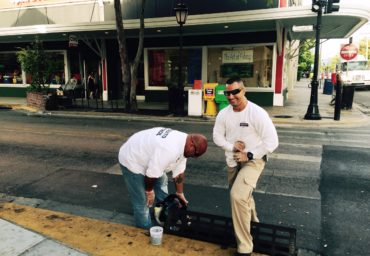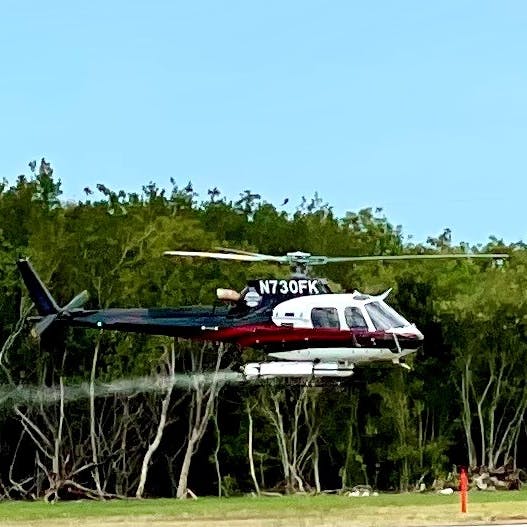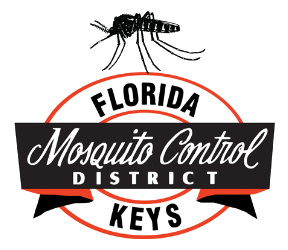Adult Mosquito Control






Adult Mosquito Control Techniques
Adult control targets the flying, blood-seeking female mosquitoes. Adult control is conducted from the ground via truck-mounted spray systems and from the air using specially equipped helicopters. Truck and helicopter sprays that target adult mosquitos are often referred to as 'Adulticides'.
These chemicals can be applied only when meteorological conditions are exactly right. In particular, if the wind speed is too high the spray will move out of the target area too rapidly, or if too low, effective dispersal of the spray will not be achieved.
Truck Mounted Adulticide (Fog Trucks):
When mosquitoes are concentrated in small areas, the District will deploy truck-mounted ULV spray systems. Ground treatments are done in the evenings beginning approximately one-half hour after sunset.
Trucks are dispatched to neighborhoods with high numbers of biting mosquitoes, allowing area-specific treatments to control problem populations. Each truck is driven at speeds specified by the pesticide label which usually do not exceed 10mph while the insecticides are being dispersed. Wind plays an important role during spray missions because of the minute size of the insecticide droplets. If the wind is too great, the insecticide will not be distributed properly throughout the air column and will be blown away from the target area. Therefore, spray missions will be conducted during times when wind conditions are optimal, usually between 2 to 10mph. The District uses permethrin, a synthetic form of pyrethrum, and malathion to control adult mosquitoes when dispensed by truck-mounted sprayers.
Aerial Adulticide (Helicopters):
Helicopters are used most often during the early morning, when temperature inversion conditions ensure the tiny spray droplets will reach the ground in order to contact mosquitoes as they finish their nightly flight activities.

In instances when mosquito populations are high and cover a large area, the District will dispatch helicopters to spray for adult mosquitoes. This is done with one of the District’s Airbus h125 helicopters. These helicopters are equipped with ULV spray systems that are designed to distribute insecticides over broad areas. Again, aerial missions are conducted only during optimal weather conditions. Flights are conducted at an altitude of 100 to 150 ft. when winds are less than 15mph on the ground.
The insecticide naled is used as a part of the District’s integrated pest management program to control migrating adult mosquitoes. It is a non-persistent insecticide which breaks down rapidly when applied in the manner of application employed by the District.
Read FAQ's and Fact Sheet about naled:
Latest EPA fact sheet on naled.pdfIn both cases, ultra low volume (ULV) spray technology is used. This allows a very small amount of product, amounting to fractions of an ounce per acre, to be used. It also eliminates the use of diluents such as diesel oil which would be an undesirable environmental contaminant. All insecticides used by the District are approved by the US Environmental Protection Agency and the Florida Department of Agriculture and Consumer Services and are specifically selected for use as adulticides because of their safety, effectiveness, and environmental compatibility.

Control of adult mosquitoes is necessary when mosquito populations cannot be treated in their larval stage. Use of mosquito adulticides is an integral part of a modern, integrated mosquito management program. It also is the most effective way to eliminate adult female mosquitoes that are infected with human pathogens. Depending upon the size of the area that needs to be treated, the District will utilize either trucks for ground adulticide treatments or aircraft for aerial adulticide treatments. Justification for adulticide treatments are based upon citizen requests, landing rate counts and trap collections.
